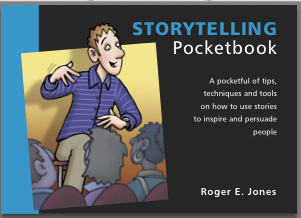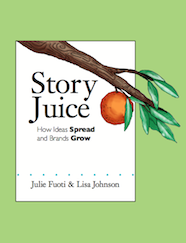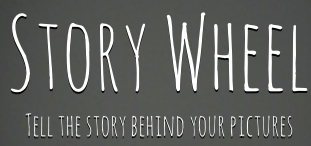I had two occasions in the last couple of months to see the “About” pages of many Web sites and blogs. In the first, I had a few dozen story practitioners that I wanted to invite to participate in my Q&A series. In the second, I visited many sites and blogs to glean a short description of each so I could list them on my inside pages.
Both activities had maddening elements.
Probably about a third of the “practitioners” provided absolutely no way to contact them. These were mostly bloggers. I do understand that blogging has its roots in anonymity. While most bloggers identify themselves today (Is that a true statement? Any stats on blogger anonymity?), some still have legitimate reasons to hide their identities. They may not want their employers to know about their blogs, for example.
But note that I perceived these bloggers as practitioners in the story world. That means they appeared to be interested in selling their services — so how do they expect to do so if they provide no contact information? Some provided only a first name; a few provided no name at all.
I don’t get it.
The other maddening phenomenon involved sites and blogs (and here I also refer to the businesses or organizations behind the sites) that provided little or no idea of what they are about — their purpose, mission, premise, etc. In at least two cases, I had to turn to third-party sites to get a description of the thrust of the sites I wanted to list. That’s just pathetic, in my opinion. Common situations:
- Absolutely no About page at all and no description on the home page as to what the site is about.
- Descriptions on the About page of people behind the site, but still no hint of what the site is about.
- Long — often nicely written and even storied — descriptions of an overall philosophy, but still no concise statement of what the site is about.
- Worse, a long, boring chronological bio with all of the founder’s credentials, but again no concise statement of what the site is about.
- Site where one could probably figure out what the site is about by using it, but the user must register to do so.
- The user has to watch a video to find out what the site is about. Sorry, I don’t have the patience for that.
Here are the two crazy-making examples from my recent endeavors for which I had to consult third-party sites to get a description:
The much buzzed-about Dear Photograph: Now, it’s not hard to figure out what this site is about by looking at it: Submitters take a snapshot — usually one featuring one or more people and dating from the film-photography era — and hold it up against the original setting so that past and present blend into a new work of art. They also write a brief piece about the work. But would it kill founder Taylor Jones to have an About page? I’d love to see how he sees the site, what his vision for it is, a description of it in his own words.
Small Demons: No About page. You’ll find a fair amount of text on the home page for this tool. But none of it explains how to use the tool, what the purpose is, and why you would want to use it. In fairness, a 1:49 video gets the user a little closer to understanding — but still doesn’t tell us how or why this tool is useful. We could also perhaps figure it out if we registered on the site. Personally, I’d like to know what I’m registering for before I register. Could we not get a simple explanation of a couple of sentences that tells us what Small Demons is good for? Something like these sentences I resorted to from Cool Hunting: “Collects and catalogs the millions of references to real-world and fictional music, movies, people, and objects that are found in literature and provides a place — a Storyverse — where users can draw meaningful connections between stories and everyday life.” I can only wonder at how many more users Small Demons would get if people could figure out what it’s about.
Not long ago, the About page of blogger Len Evans’s blog, “Looking Out from My Little Place was cited as a nice, storied example of an About page (I’m sorry that I forget who pointed it out.)
The story is indeed charming, authentic, and personal, especially when juxtaposed with the link Evans provides at the end of the story: “The Blah, Blah, Blah Bio” (also charmingly, there’s not all that much blah, blah, blah).
Evans’s story isn’t perfect. It’s a tad long. He says what he’s about but isn’t explicit about what the blog’s about. A quick look, however, reveals that his “about” and his blog’s are one and the same: “pastoring youth pastors and youth workers, helping build healthy local youth ministry networks, providing youth ministry training and walking alongside churches with a process so they can discern and discover what a healthy youth ministry means in their context.”
Still, it’s a refreshing About page compared to many.
Karen Dietz included in her Just Story It Scoop.it curation today Sonia Simone’s article on this “About” subject, Are You Making These 7 Mistakes with Your About Page?, which covers many of the same complaints I’ve just ranted about — plus more:
- You don’t have an About page.
- I can’t find your name.
- I don’t know what you look like. (Not a huge complaint for me, but a photo is nice.)
- The writing is boring.
- Using video alone.
- You go on (and on and on).
- I bet you think your About Page is about you.
The article also generated 113 comments (at this writing), so it’s a great discussion of the issues of About pages.
Why do you think so many Web folks and bloggers fall down in the area of About pages, and what are your pet peeves?
having watched the experience of the U.S. and later NATO forces in Afghanistan.
















